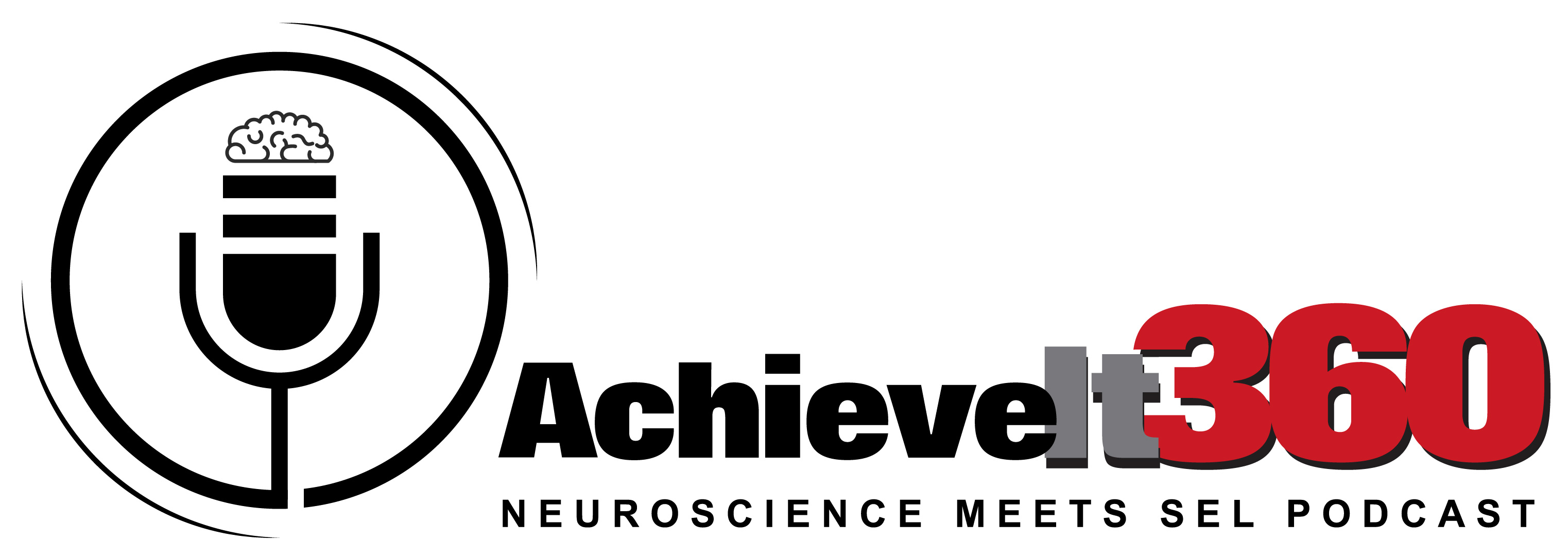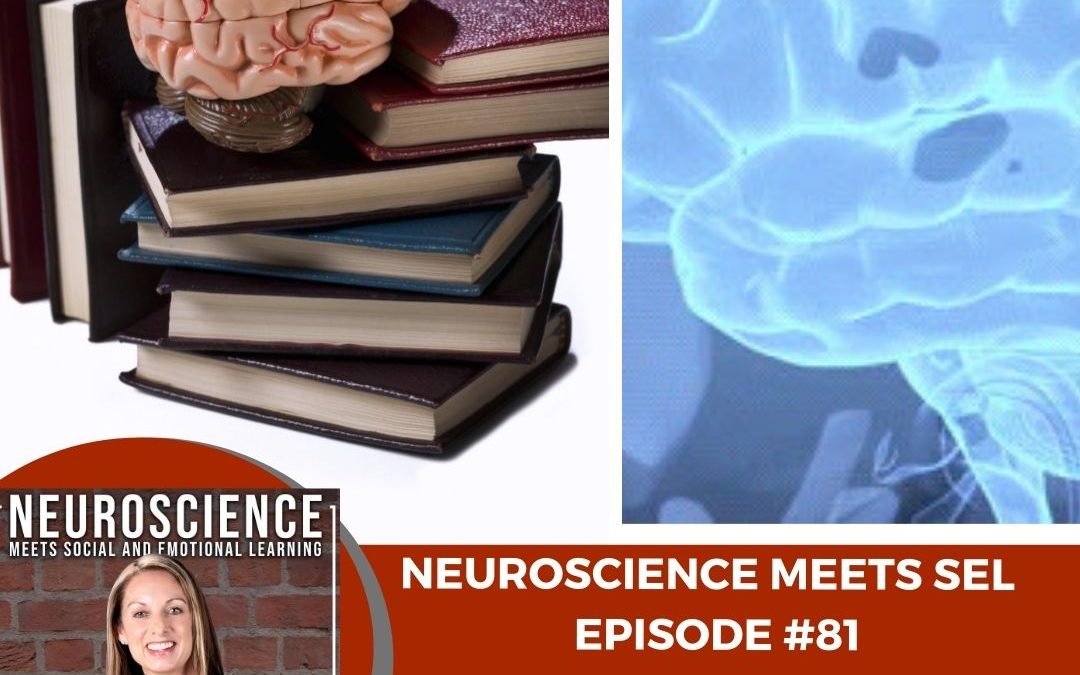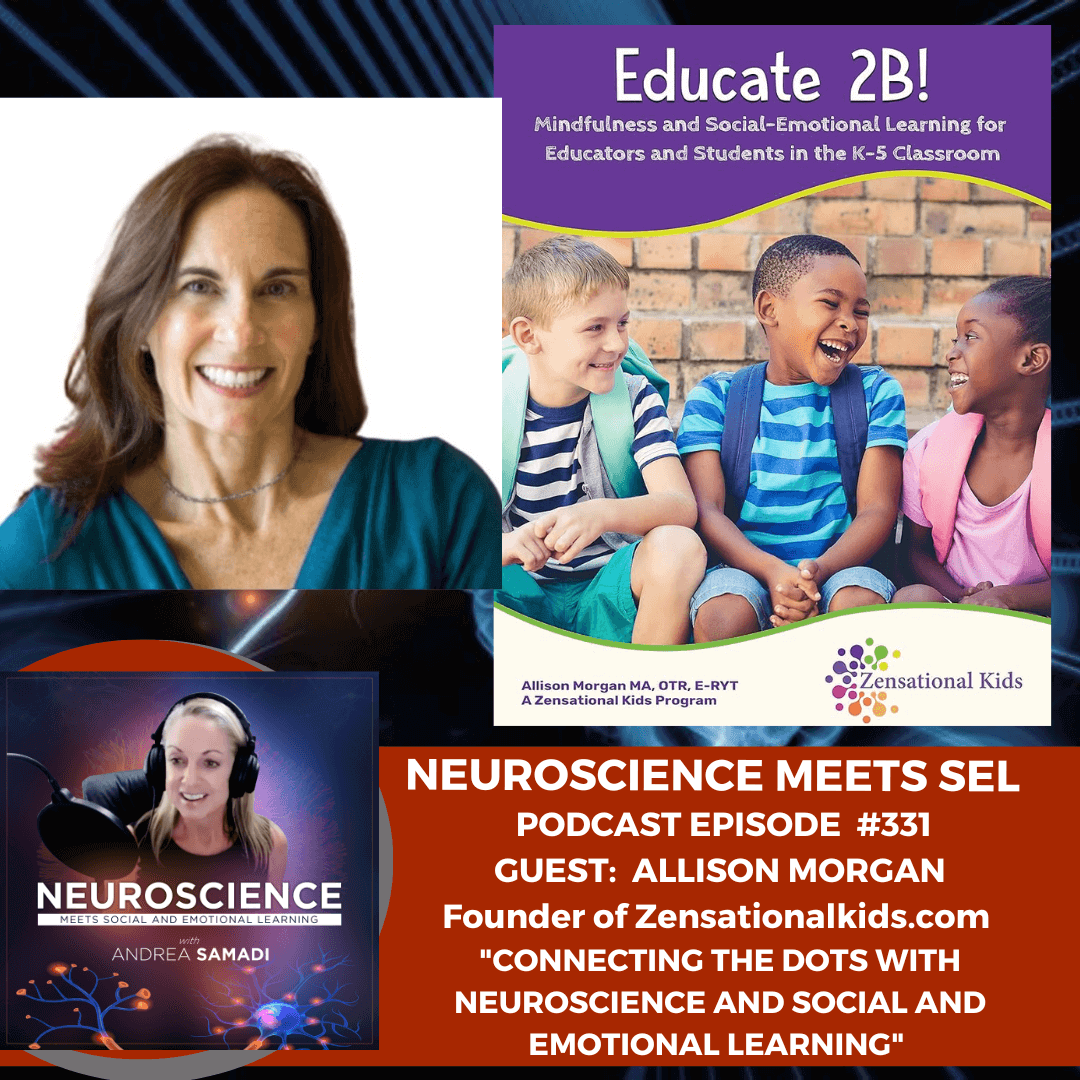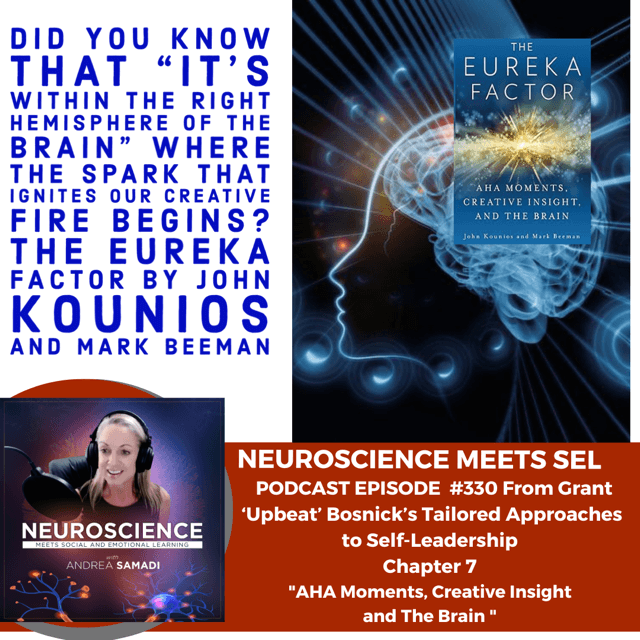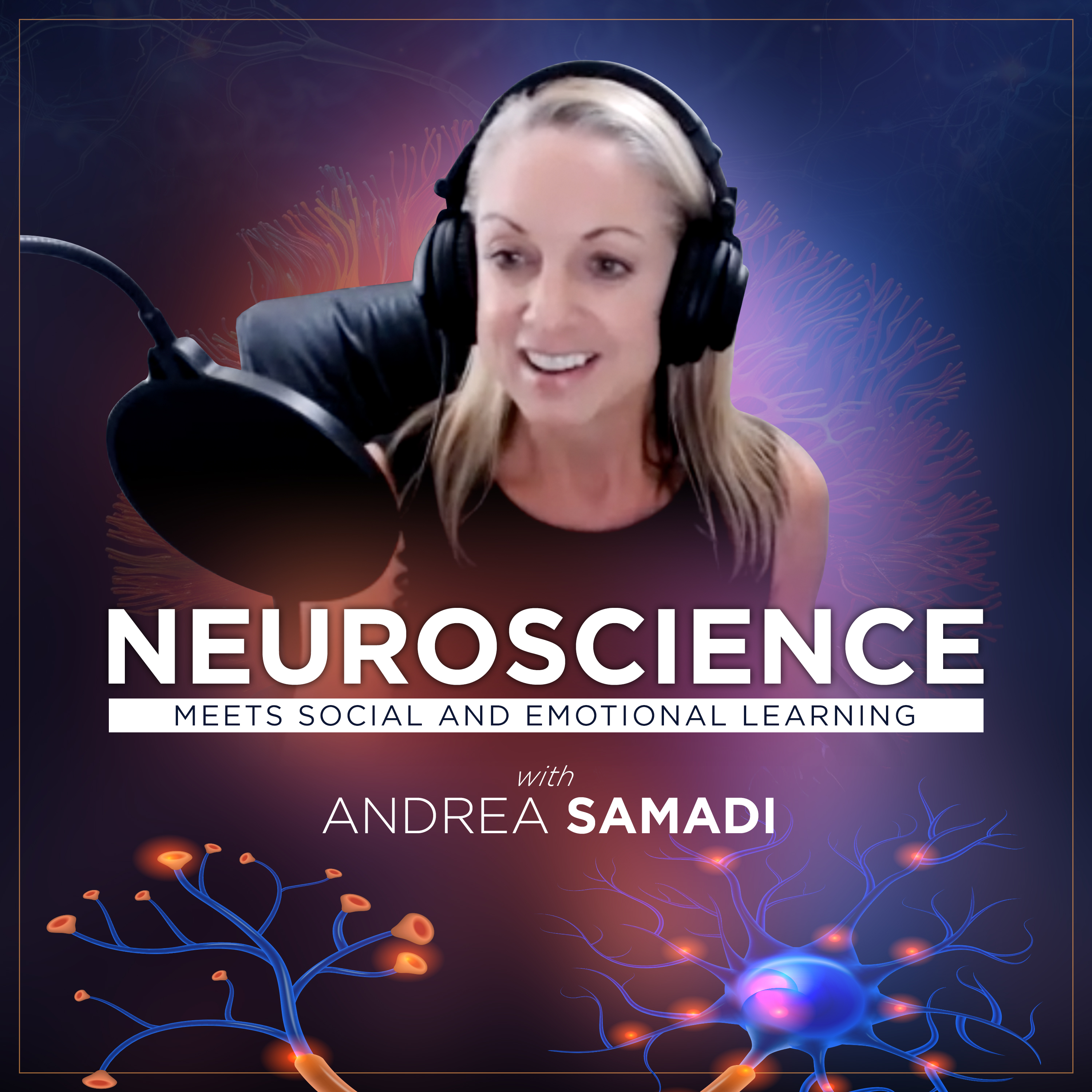Welcome back to the Neuroscience Meets Social and Emotional Learning podcast, episode #81. This episode was inspired by someone I grew up with, Alex, who sent me a DM on social media this week asking me “do you have anything I can use to help my team to learn, develop and improve their critical thinking skills?” Since “thinking” is such an important skill, originating in the cortex, or top layer of the brain, I thought it would be a good topic to cover this week. Alex, this one is for you.
For those who are new here, my name is Andrea Samadi, a former educator who created this podcast to bring awareness, ideas and strategies to our most pressing issues facing educators in the workplace, or parents working from home or in the corporate space, to keep us all working at our highest levels of productivity. Each episode we provide you with specific tools, resources and ideas to implement proven strategies backed by the most current neuroscience research to help you to help improve daily productivity, achievement and results.
This week we are looking at thinking, specifically what we can do to improve our thinking skills. Have you recently heard yourself or someone else, say “I’m so busy, I can barely think?” or have you ever told your kids to be quiet so you can “think?” I’ve heard it and said it myself more so these days than usual, as our schedules just seem to be getting busier and busier each month with the new events unfolding in the world, with the fact that many children are going back to school “distance learning” at home, while parents are working, (and we all remember how that went in the Spring) so many of us are finding it difficult to “think, focus and concentrate” under these new conditions that require us to put in a bit more effort than we might have been used to in the past. I hope you find these strategies on thinking as helpful as I have and find ways to implement just one or two of them, to make life flow easier all of us as we move into the final half of 2020.
Thinking and the Brain
Before we look at strategies to improve our thinking skills, I want to dive deeper into what exactly thinking is as it happens in the brain. When you are thinking, your neurons (86 billion of them) are shooting messages back and forth. This firing of neurons uses “2/3 of your brain’s energy”[i] and “is powered by a molecule called ATP (Adenosine Triphosphate if you can remember that from 9th grade Science class) which is generated by the mitochondria (the powerhouse of the cell) which burns glucose” that gives us the energy we need to think.
This means that our brain runs on this simple sugar, and if we are low on this fuel, it’s harder for the brain to work. So, we must remember to eat, to provide the fuel our brain needs to think, and rest. But eating and rest are only a part of the solution. There’s much more that we can do to optimize the power of our thinking brain.
We have mentioned in previous episodes (#23 Understanding the Difference Between Your Mind and Your Brain)[ii] about ways we can strengthen our brain and thinking with the power of “the unfocused” mind. In previous episodes, we did hear this point mentioned by some of the top thinkers in the world. Bob Proctor, on episode #66[iii] mentioned this fact when he pointed out that at the beginning of Earl Nightingale’s “The Strangest Secret” program, Earl talks about the famous Nobel Prize Winner Dr. Albert Schweitzer who recalled being asked by a reporter “what’s wrong with man today?” and Dr. Schweitzer thought about it for a minute, and then answered “They simply don’t think” which makes sense to me, because I know that life runs smoother when I can take the time I need to think.
Eric Jensen also talked about the power of taking breaks in relation to learning in episode #79 when he said he asked Dr. Terry Sejnowskji, a leading scientist from the Salk Institute who co-authored the book called Learning How to Learn.[iv] Eric asked Dr. Sejnowski about the best way to help students form long term memories with what they are learning, and he replied “10 minutes of instruction, and then go take a walk and stop your brain from processing.” The brain requires time to consolidate the information that comes into it, or we will get into what we all know to be information overload, where nothing that we are learning, or taking in, will be retained.
I mentioned that we have covered tips to strengthen our brain and cognition (the mental action of acquiring knowledge and understanding through thought, experience and the senses) in episode #23, but let’s review them.
How to Strengthen Your Brain and Cognition:
-
- Take brief relaxation breaks to maintain focus and improve your ability to think and problem solve. We must find a way to relax our brain and body. It’s during these “resting states” that remarkable activity takes place, allowing the brain to creatively solve problems. Dr. Srini Pillay, an Assistant Professor of Psychiatry at Harvard Medical School, (who I am working really hard to get on as a guest) wrote a book about the importance of this resting period in his book,
Tinker, Dabble, Doodle, Try:
-
- that is about unlocking the power of the unfocused mind
[v].
-
- In this book Pillay explains that too much focus depletes your brain of glucose and depletes you. We just spoke about the importance of glucose as energy to keep our brain running optimally, so we must think of ways to conserve our energy. Pillay believes in the fact that it is as equally important to have strategies for purposeful focusing, in addition to unfocusing our minds to improve resourcefulness, creativity, optimism and well-being. When you can build unfocused time into your day, it will allow you to make better decisions, and will give you more energy.Be mindful of ways to eliminate decision fatigue, allowing those times for your mind to become unfocused. Remember that Einstein discovered his Theory of Relativity by using his intuition, and then used logic to explain it. This unfocused time can take you to places and insights where focus cannot. We’ve all heard of strategies used by the most successful thinkers in the world, designed around eliminating decision fatigue. Steve Jobs became famous for cutting down the number of decisions he had to make every day by wearing the same clothes each day. Since we typically make 35,000 decisions
-
- every day, so a simple way to conserve brain power is to cut down on the number of decisions you need to make. You can do this by choosing the same foods to eat at breakfast and lunch, or by getting the same outfit that you like to wear, in different colors. When you create routines like this for yourself, it will prevent life’s daily distractions (they are always going to be there) from zapping the energy that you can use somewhere else.Improve the circuits of your brain by learning to look within for answers. In his book,
Mindsight: The New Science of Personal Transformation[vii]
-
- Dan Siegel (episode #28)
- shares that teachers introduced to a concept called “mindsight or the ability to focus on the inner life of their student or child” teach with the brain in mind and are reaching students in deeper and more lasting ways.” The research shows that developing the ability to make sense of your own life and past experiences, translates into the development of your students and children. This self-awareness also creates a sense of peace and understanding with your own life, allowing more energy to be funneled towards what’s important for you in the present and future, instead of spending time worrying about what we cannot change from our past.
Once you learn to implement these energy saving strategies as habits, you will have more space available to think. You can then take your thinking to the next level. When I received the message on social media last week from my friend asking “What do you have on improving someone’s critical thinking skills” I immediately thought of episode #12 on Responsible Decision-Making, but when I looked at it, there was something missing. It was missing the fact that it’s really difficult to think or make decisions the way the world is today, without some serious introspection. Once we can take the time to step away, and give our brain some time to rest, thinking and decision-making will be much easier.
Improve Your Decision-Making Muscles in the Workplace:
Even though adults have a fully developed prefrontal cortex, the part of our brain that makes decisions, we still need a process to follow to ensure we are making effective and smart decisions that yield the results we are looking for. Go back to EPISODE #12 on Responsible Decision-Making for review.[ix] Remember that to make an effective decision, you must first learn how to think, and we have covered tips on how to relax and save energy to maximize our ability to think. The process of thinking is carried out by the executive functions in your brain (in your prefrontal cortex): functions like planning, implementing, monitoring, and making adjustments to overcome problems are all involved with our ability to think.
When working on a goal, or solving a problem, here are four simple steps you can use that eventually will become habitual and will increase your performance for decision-making.[x]
Start your decision-making process with these 4 Steps:
- Evaluate the Problem You Want to Solve:This process begins in your frontal lobes. What’s the problem? What outcomes are you looking for? Is your outcome achievable? Is it meaningful? Attach meaning and emotion to help increase your motivation. Make sure everyone on the team is on board with the “why” or motivation behind the goal.Then Plan Your Strategy:Next, your frontal lobe maps out the strategies needed as you ask yourself “where am I now, where do I want to go, how will I get there and what strategies and tactics do I need?” Your strategy is your game plan. I’ve seen this plan mapped out many different ways but knowing where you are starting from, what your end goal is, and identifying what’s missing (your gap) is crucial to this step. This is where skill development takes place and the gaps are filled. Become clear on what’s missing and what must be learned to achieve the goal? Who can we consult with to fill in our gaps? Identify the experts you will need.Next, Break Down Your Strategy: into Tactics:Once you have listed the strategies that you will use, then you must break down the strategy into smaller chunks or tasks. Tactics help you to carry out your overall strategy one day at a time as your frontal lobe works with your body to put these ideas into action. This is where the hard work comes into play. Finally, Monitor, Adjust and Track Progress:When you take action, your frontal lobe is ready to make changes as obstacles come up. Be ready to pivot when needed as you monitor what’s working and what isn’t. Effective decision-making requires ongoing evaluation of these four steps. Who can you bring on your team to help you to overcome obstacles that you are facing? What else do you need?
When you are able to implement the energy saving strategies of taking unfocused breaks to allow for more creativity to flow, or adding in some new strategies to eliminate decision-fatigue, or becoming confident in your abilities as you search for answers from within, your ability to make quick and certain decisions will improve. You will create reservoirs of energy that you can access on a daily basis, so that when decision-making, or problem solving comes up, you will be prepared mentally and physically to go quickly through the 4-step process, making sounder and more steadfast decisions while solving problems.
But it all began with the understanding of what the brain needs to run efficiently. If you do not allow for the rest it needs, or the proper fuel, you will notice that “thinking” is the hardest work in the world. Remember—the brain is involved in everything that we do, and everything that we are, so we must tie this into our daily decision-making process to optimize our future behavior and results.
See you next week.
[i] This is How Your Brain Powers Your Thoughts YouTube Published April 9, 2017 https://www.youtube.com/watch?v=yxUkUaV2VPs&feature=youtu.be
[ii] Neuroscience Meets SEL Podcast Episode #23 “Understanding the Difference Between the Mind and the Brain” https://andreasamadi.podbean.com/e/understanding-your-brain-and-mind-for-increased-results/
[iii] Neuroscience Meets SEL Podcast EPISODE #66 with the Legendary Bob Proctor https://www.youtube.com/watch?v=QHWMCzfODU4&list=PLb5Z3cA_mnKhiYc5glhacO9k9WTrSgjzW&index=51&t=1171s (41:00)
[iv] Learning How to Learn by Barbara Oakley and Terrence Sejnowski (August 2018) https://barbaraoakley.com/books/learning-how-to-learn/
[v] Dr. Srini Pillay Tinker, Dabble, Doodle, Try: Unlock the Power of the Unfocused Mind https://www.amazon.com/Tinker-Dabble-Doodle-Try-Unfocused-ebook/dp/B01JWDZ7SK/ref=sr_1_1?keywords=pillay+tinker&qid=1570042219&s=digital-text&sr=1-1
[vi] Why Successful People Wear the Same Thing Every Day by Craig Bloem Feb. 20, 2018 https://www.inc.com/craig-bloem/this-1-unusual-habit-helped-make-mark-zuckerberg-steve-jobs-dr-dre-successful.html
[vii] Mindsight: The New Science of Transformation Dr. Dan Siegel https://www.drdansiegel.com/about/mindsight/
[viii] Neuroscience Meets SEL EPISODE #28 with Dr. Daniel Siegel on “Mindsight” https://www.achieveit360.com/clinical-professor-of-psychiatry-at-the-ucla-school-of-medicine-dr-daniel-siegel-on-mindsight-the-basis-for-social-and-emotional-intelligence/
[ix] Neuroscience Meets SEL Podcast EPISODE #12 “Responsible Decision-Making Begins with Understanding Your Brain Health” with Andrea Samadi https://andreasamadi.podbean.com/e/responsible-decision-making-begins-with-brain-health/
[x] Mark Robert Waldman and Chris Manning, Neurowisdom: The New Brain Science of Money, Happiness and Success (Diversion Books, January 31, 2017) https://www.amazon.com/NeuroWisdom-Brain-Science-Happiness-Success-ebook/dp/B01N9BLBDH/ref=sr_1_1?keywords=neurowisdom&qid=1565268860&s=gateway&sr=8-1
Podcast: Play in new window | Download
Subscribe: Apple Podcasts | RSS
